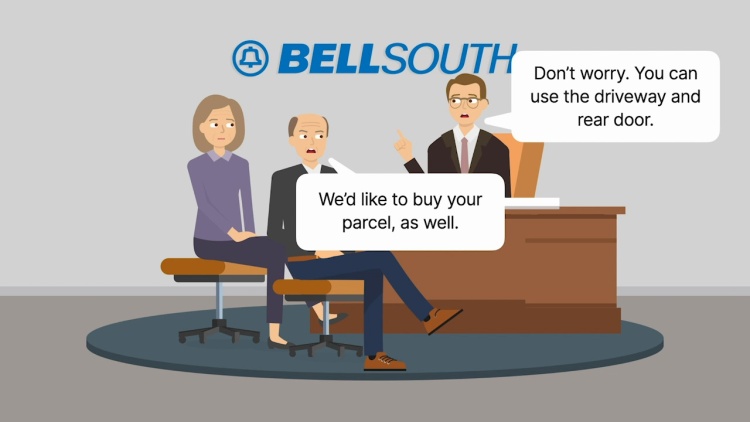Boyd v. BellSouth Telephone Telegraph Co., Inc.
South Carolina Court of Appeals
359 S.C. 209, 597 S.E.2d 161 (2004)

- Written by Sara Rhee, JD
Facts
BellSouth Telephone Telegraph Co., Inc. (BellSouth) (defendant) owned a parcel of land in Denmark, South Carolina. The parcel was bound on three of its sides by public streets. A three-story building sat on the front portion of the parcel. Bellsouth later built a driveway extending from the double doors at the back of the building to the street behind the home. In 1988, BellSouth divided the parcel in two and sold the front lot to the City of Denmark (the City). The City used the property, including the driveway, for about three years before conveying the property to Caroline Boyd’s (plaintiff’s) husband. Boyd’s husband then conveyed the lot to Boyd for Boyd’s antique business. Part of the Boyds’ decision to purchase the property was based on the accessibility of the driveway. For years, Boyd used the driveway to receive deliveries that were too large to receive through the front entrance. However, after the terrorist attack in 2001, BellSouth decided to increase security by installing a fence around its lot. The fence ran along Boyd’s back property line and cut off her access to the driveway. Boyd sued BellSouth, arguing that she possessed an easement by necessity or by pre-existing use. A special referee heard the case and granted summary judgment in BellSouth’s favor.
Rule of Law
Issue
Holding and Reasoning (Howard, J.)
What to do next…
Here's why 899,000 law students have relied on our case briefs:
- Written by law professors and practitioners, not other law students. 47,000 briefs, keyed to 994 casebooks. Top-notch customer support.
- The right amount of information, includes the facts, issues, rule of law, holding and reasoning, and any concurrences and dissents.
- Access in your classes, works on your mobile and tablet. Massive library of related video lessons and high quality multiple-choice questions.
- Easy to use, uniform format for every case brief. Written in plain English, not in legalese. Our briefs summarize and simplify; they don’t just repeat the court’s language.





